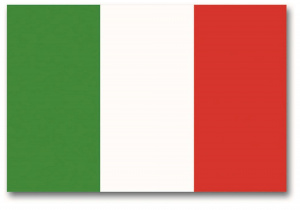Language/Italian/Culture/Italian-Regions-and-Cities
 Հայերէն
Հայերէն Български език
Български език 官话
官话 官話
官話 Hrvatski jezik
Hrvatski jezik Český jazyk
Český jazyk Nederlands
Nederlands English
English Suomen kieli
Suomen kieli Français
Français Deutsch
Deutsch עברית
עברית हिन्दी
हिन्दी Magyar
Magyar Bahasa Indonesia
Bahasa Indonesia فارسی
فارسی 日本語
日本語 Қазақ тілі
Қазақ тілі 한국어
한국어 Lietuvių kalba
Lietuvių kalba Νέα Ελληνικά
Νέα Ελληνικά Şimali Azərbaycanlılar
Şimali Azərbaycanlılar Język polski
Język polski Português
Português Limba Română
Limba Română Русский язык
Русский язык Српски
Српски Español
Español العربية القياسية
العربية القياسية Svenska
Svenska Wikang Tagalog
Wikang Tagalog தமிழ்
தமிழ் ภาษาไทย
ภาษาไทย Türkçe
Türkçe Українська мова
Українська мова Urdu
Urdu Tiếng Việt
Tiếng Việt
Italy is a country of diverse regions, each with its own distinct culture and traditions. In this lesson, we will explore the geography, history and culture of some of the most important regions and cities of Italy.
Regions
Italy is divided into 20 regions, each with its own culture, traditions and dialects.
North
The Northern region of Italy, also known as Padania, is home to some of the country's most prosperous cities, including Milan, Turin and Venice. It is also known for its stunning mountains, lakes and scenic countryside.
One of the most important traditions of the North is the Aperitivo, a pre-dinner drink and snack that is typically enjoyed in the early evening.
| Italian | Pronunciation | English |
|---|---|---|
| Aperitivo | a-pe-ri-'ti-vo | Aperitif |
Central Italy
Central Italy is known for its ancient history, stunning coastline and picturesque hill towns. The region includes Tuscany, Umbria, Lazio and Marche.
Tuscany is famous for its wine, and is home to some of the world's most renowned vineyards. Many towns in Tuscany have well-preserved medieval architecture.
| Italian | Pronunciation | English |
|---|---|---|
| Tuscany | tus-'ka-ny | Toscana |
| Vineyard | vi-ney-'yard | Vigneto |
South Italy
Southern Italy is known for its stunning coastline, delicious food and vibrant culture. The region includes Campania, Apulia, Calabria and Sicily.
Sicily is the largest island in the Mediterranean, and has a rich cultural heritage that reflects its diverse history. The island is known for its ancient ruins, beautiful beaches and delicious cuisine.
| Italian | Pronunciation | English |
|---|---|---|
| Sicily | 'si-ly-ly | Sicilia |
| Ruins | rooh-ins | Rovine |
Cities
Italy is home to some of the most beautiful and historic cities in the world. Each city has its own unique character and attractions.
Rome
Rome, the capital of Italy, is a city with a rich history that spans over two and a half millennia. It is home to some of the world's most famous landmarks, including the Colosseum, the Pantheon and the Vatican City.
One of Rome's most popular foods is pizza al taglio, which is pizza sold by the slice.
| Italian | Pronunciation | English |
|---|---|---|
| Pizza al taglio | 'pits-za al 'ta-lyo | Pizza by the slice |
| Colosseum | ko-los-'se-um | Colosseo |
Florence
Florence, the capital of Tuscany, is widely regarded as the birthplace of the Renaissance. The city boasts some of the world's most famous art and architecture, including Michelangelo's David and Brunelleschi's dome.
One of the most popular tourist attractions in Florence is the Ponte Vecchio, a medieval stone bridge that is lined with shops.
| Italian | Pronunciation | English |
|---|---|---|
| Ponte Vecchio | 'pon-te 'vek-kyo | Old Bridge |
| Renaissance | re-nays-'san-tshe | Rinascimento |
Naples
Naples is a vibrant city with a rich history and culture. It is also famous for its pizza, which is said to be the best in the world. The city is home to some of the country's most important archaeological sites, including Pompeii and Herculaneum.
One of the most popular Neapolitan dishes is spaghetti alla puttanesca, a pasta dish that is made with tomatoes, olives, capers and garlic.
| Italian | Pronunciation | English |
|---|---|---|
| Spaghetti alla puttanesca | spa-'get-ty al-la pu-ta-'nes-ka | Spaghetti with tomato sauce, anchovies and capers |
| Pompeii | pom-'pe-ee | Pompei |
Conclusion
Italy is a country of immense cultural richness and diversity. From the mountains of the North to the beaches of the South, each region and city has its own unique character and traditions. By gaining an understanding of the country's geography and history, we can better appreciate the beauty and complexity of Italian culture.
Sources
Related Lessons
- San Marino Timeline
- Italian Cuisine and Wine
- Movies
- Italy Historical Events
- Why Learn Italian
- Italian Art and Music
- Italian Festivals and Celebrations

